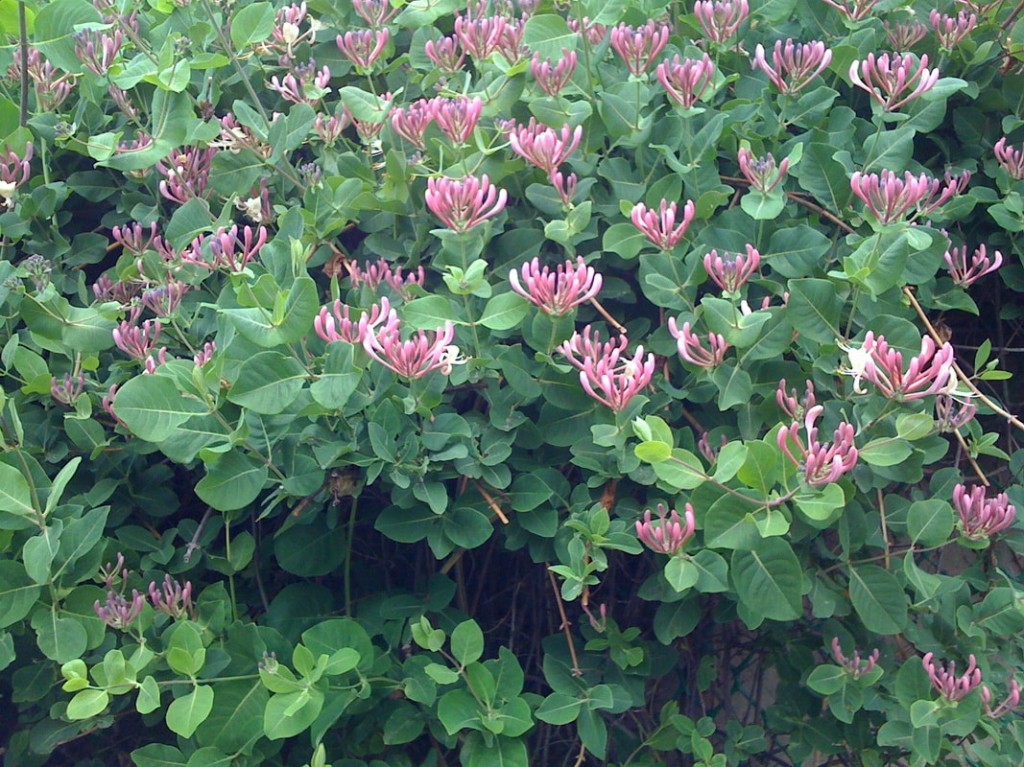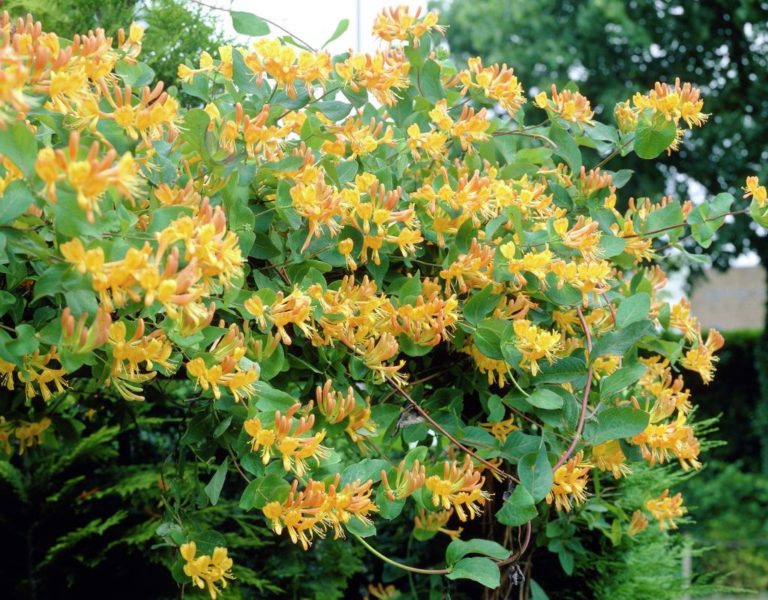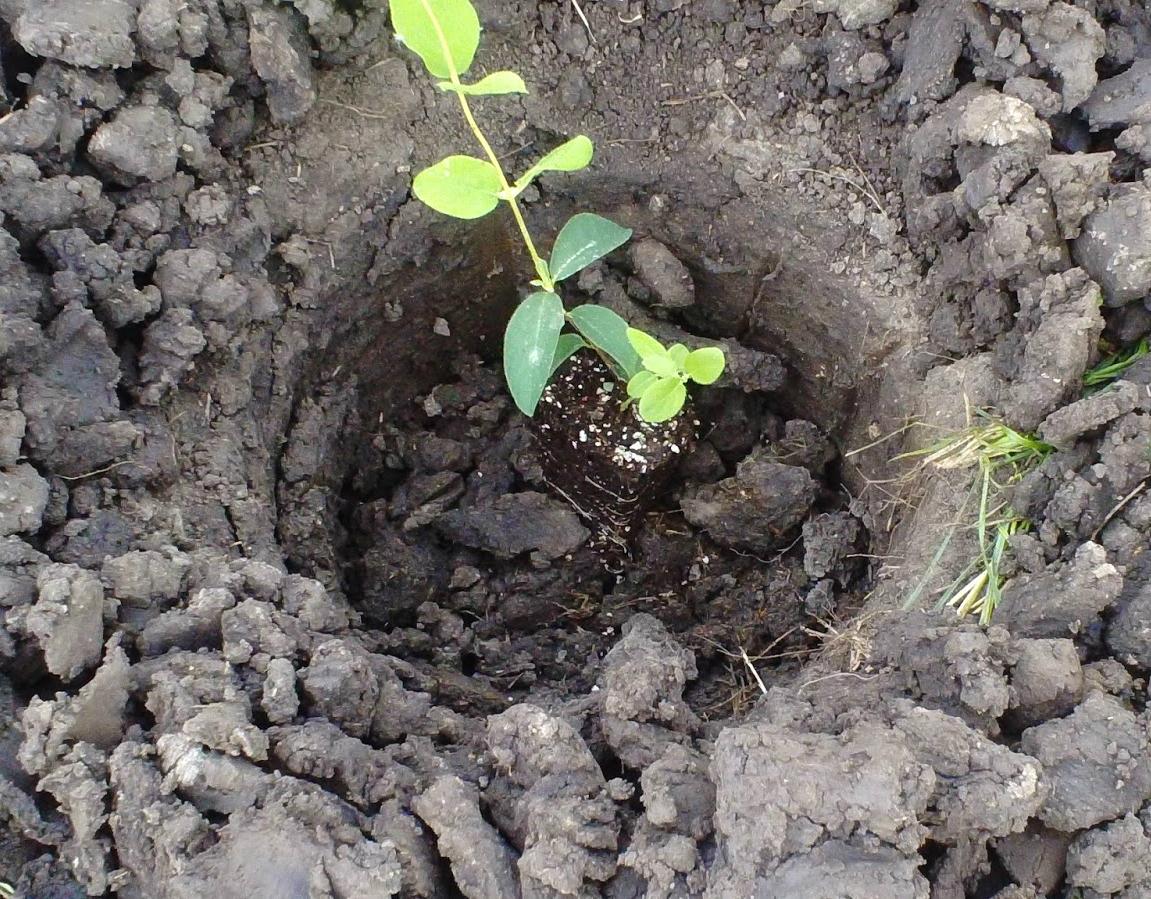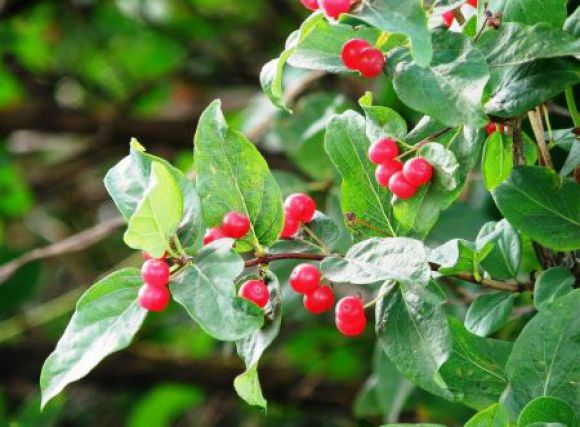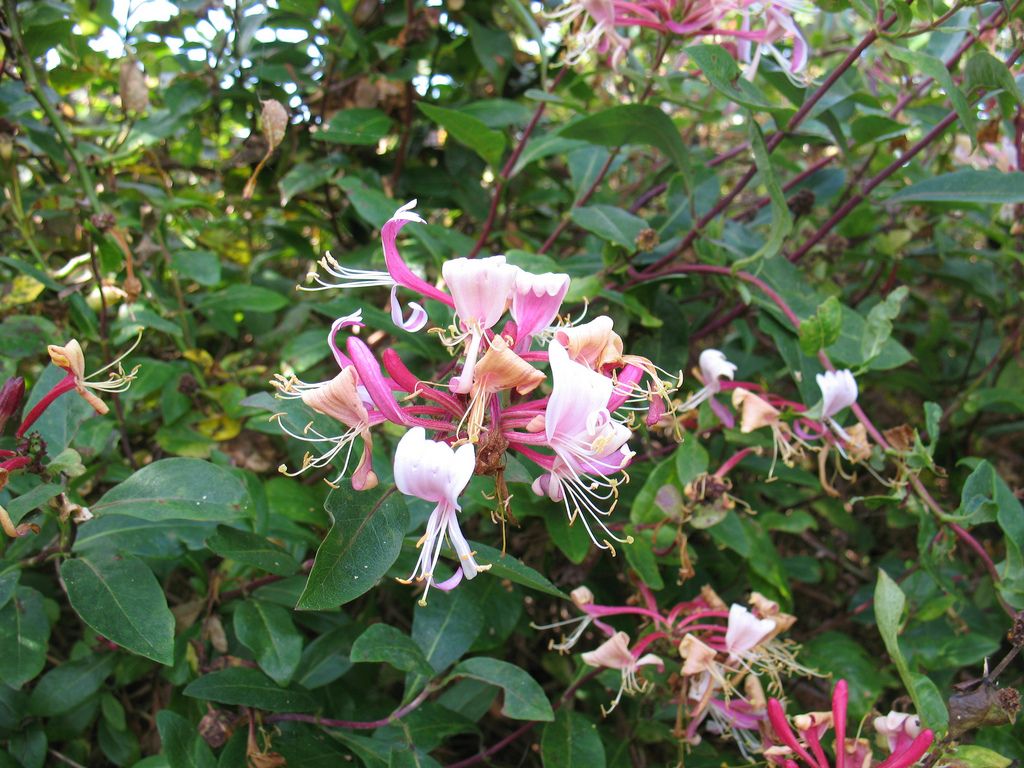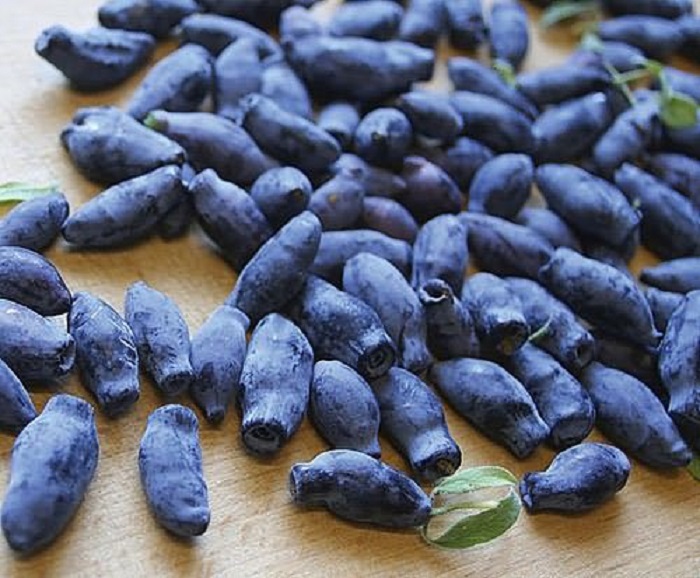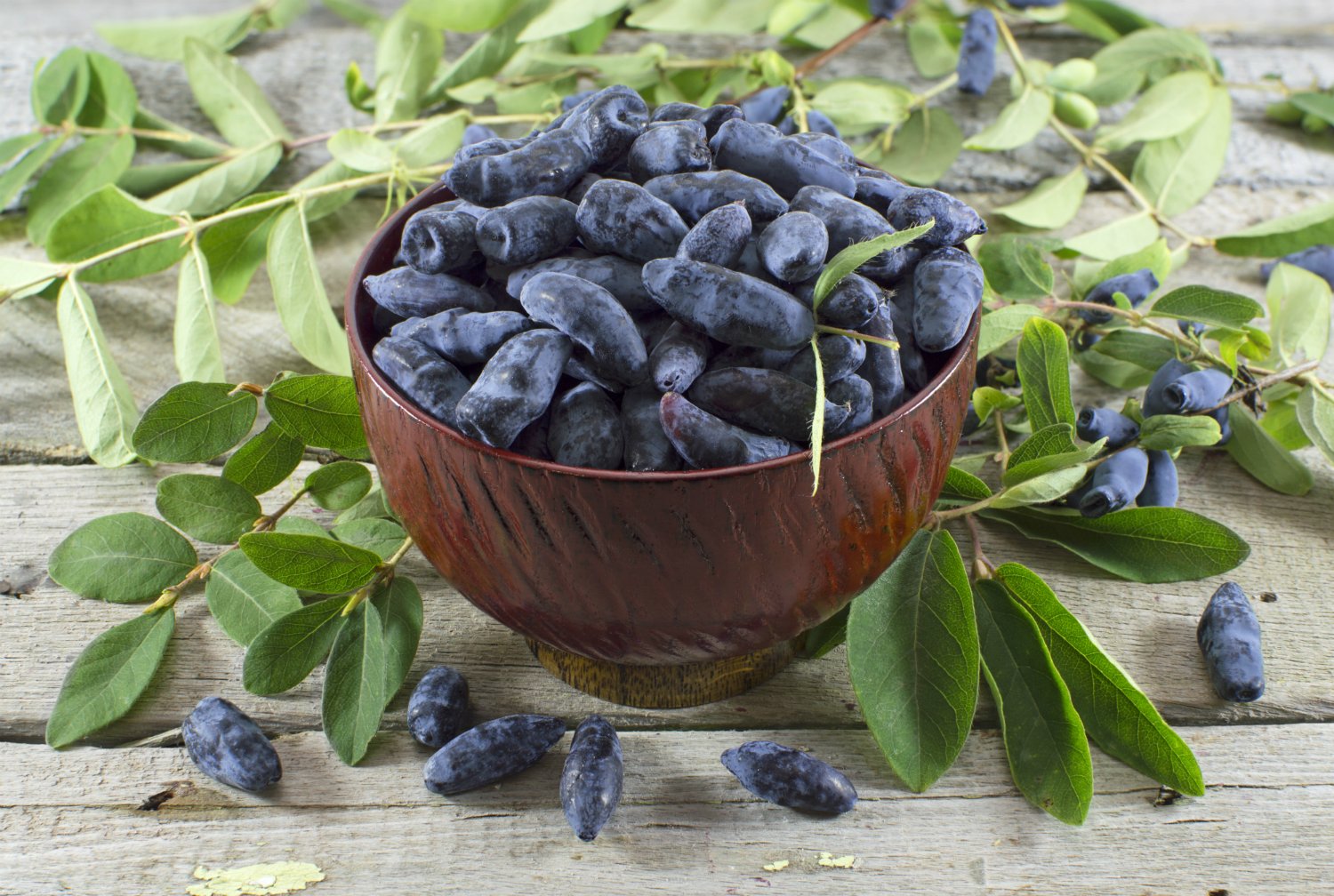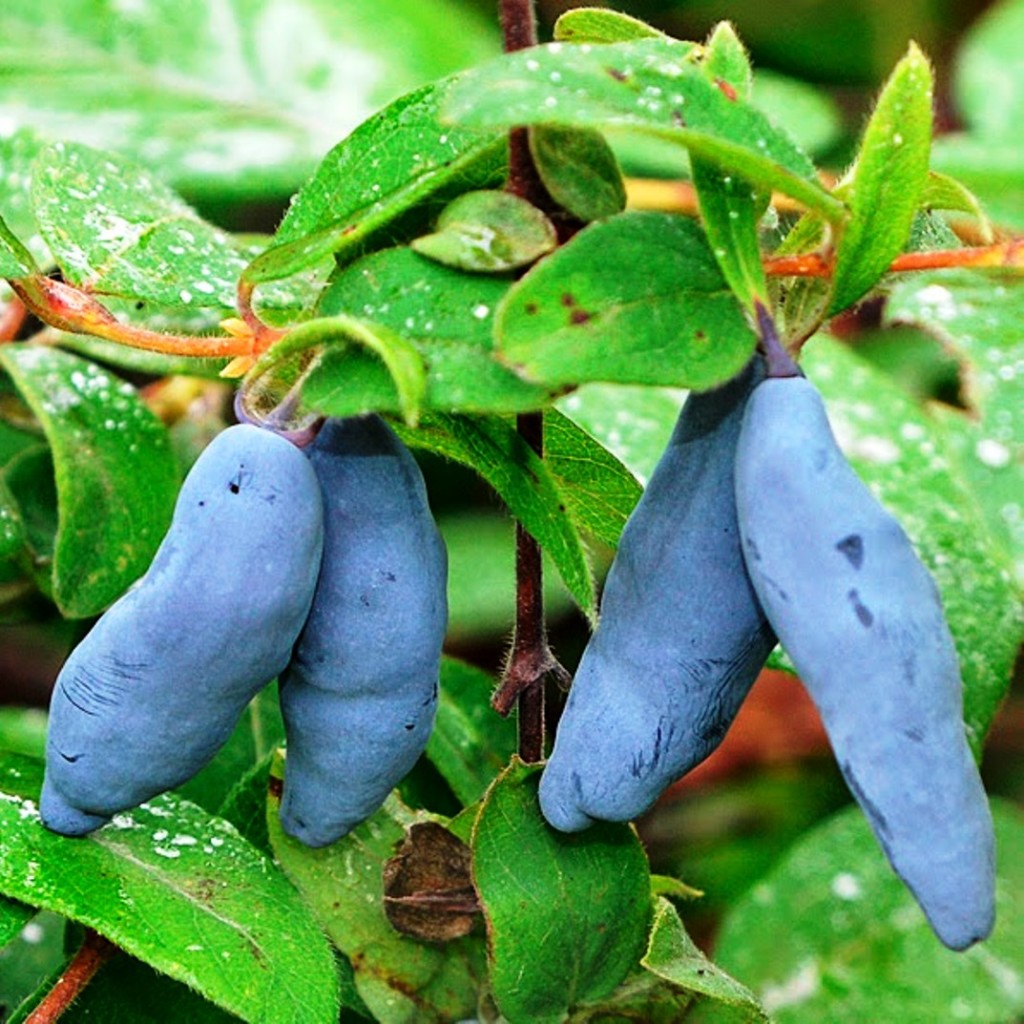Content:
Each gardener tries to decorate his garden plot in a special way, to bring his own flavor and personality. Today, climbing plants that imitate hedges are very popular. Honeysuckle decorative curly due to the flexibility and elasticity of its shoots perfectly copes with the task. This climbing plant in the shortest possible time is able to twine around a fence, a gazebo, an arch and other elements, creating an alley, an alpine slide or a green fence, thereby transforming the site. Today, there are more than 100 varieties of climbing honeysuckle. This plant is quite unpretentious in care, grows quickly, exudes a pleasant aroma during flowering and looks very beautiful.
Breeding history of the variety
Curly honeysuckle has been studied for a long time. Back in the 18th century, the then famous Russian scientist Stepan Krashennikov mentioned it. In his writings, he described her as a climbing, erect, creeping shrub belonging to the family of Honeysuckle (Caprifoliaceae). But it got its Latin name thanks to the Swedish botanist and zoologist Karl Linnaeus (1707-1778), who named it honeysuckle after the German mathematician, physicist and botanist of the 16th century Adam Lonitzeri (Adamus Lonicerus 1528-1586) in 1753. Carl Linnaeus originally planned to call the curly honeysuckle Caprifolium, since in European countries the most common variety of honeysuckle Caprifolium was found.
Features of honeysuckle varieties
Today, according to The Plant List, there are 103 species of curly honeysuckle.
Conventionally, they can be divided into several groups, depending on their appearance:
- A number of varieties visually resemble small dwarf trees, reaching a height of up to 2 meters. Their branches are quite strong and flexible, spreading, which allows children to climb freely on them;
- Another type of climbing honeysuckle is a climbing shrub grown for decorative purposes. The branches of the shrub are flexible, resilient, strong, and can be up to 4-5 meters long. Bush shoots can be either creeping or high;
- Honeysuckle in the form of climbing vines, the length of which can reach 6-7 meters, or even more.
All types of climbing honeysuckle have strong, flexible branches, regardless of whether it is climbing or growing in the form of a tree. The leaves are bright, green, often grow together with each other.
Honeysuckle flowers are quite unusual: large, are located in pairs at the ends of branches, can have a varied shade (cream, white, crimson, gold, purple, pink). A whisk emerges from the cup, presented in the form of a tube, divided into 5 parts. All varieties have one thing in common: attractive appearance and pleasant aroma during flowering. The longest flowering species is considered to be the Korolkov variety. Its flowering lasts from May to August, then fruits appear in place of flowers, serving for decorative purposes.
In Russia, the period of flowering of decorative honeysuckle begins in May and lasts until June-July, depending on the variety.
The fruits of curly honeysuckle are most often not edible, resemble berries in shape, are arranged in pairs, often grow together.The color of the fruit can also be varied, for example, common honeysuckle is characterized by bright scarlet fruits, blue honeysuckle - by fruits of a purple hue (its fruit is edible). Fruiting does not have a good harvest. For the season, edible fruits can be harvested, depending on the variety, up to 2-4 kg per bush. When fully ripe, the berries usually fall off.
In the wild, you can find honeysuckle with poisonous berries. For example, in central Russia, on the edges of forests, real honeysuckle grows (in a folk way). After flowering yellow-white flowers on it, small poisonous red berries, popularly called "wolf berries", appear.
The most common types of honeysuckle grown for decorative purposes in various regions of Russia can be distinguished:
- Curly Honeysuckle Serotina is characterized by crimson flowers, with dark green foliage, conventionally refers to the vine species. The flowering period lasts from June to August. Non-edible fruits appear from July to October;
- Honeysuckle Graham Thomas maintains green foliage throughout the year, even in winter. Her winter hardiness is excellent. It blooms with yellow or red flowers from June to September. Fruiting occurs in summer and autumn from July to October. Eating fruits is dangerous to health;
- Thälmann's honeysuckle is a liana of a bright green hue, the length of which reaches 7 meters. It blooms from June to July with golden flowers with a red tint; fruiting begins in July and lasts until September. Requires timely fertilization and watering;
- A type of climbing honeysuckle Hector is a green decorative liana, about 4 meters long. Its feature is large flowers, pleasing to the eye from June to the first frost. The fruit is bright red, ripens from August to October. Not resistant to frost, requires additional shelter when winter comes.
Depending on the variety, some climbing honeysuckle has good winter hardiness, while some species require additional shelter with the arrival of the first frost.
Planting and caring for curly honeysuckle
Decorative curly honeysuckle requires care, then the reproduction and growth of the bush will not take long.
Depending on the variety, some types of decorative honeysuckle grow well in the shade, but, according to experienced gardeners, it is better to give preference to sunny areas, protected from drafts by fences or walls of the house. Most often, honeysuckle is unpretentious to the type of soil.
When choosing seedlings, it is recommended to give preference to 2 or 3-year-old shoots, with a developed root system, with several buds and without obvious signs of disease.
Preparing for planting includes fertilizing. The soil is fertilized in a standard way: with the help of manure, tree resin, humus, which are scattered over the soil surface and dug to the full depth of the bayonet with a shovel. This procedure is performed a couple of weeks before planting. Planting of seedlings occurs in open ground, both in late autumn and early spring.
Landing is carried out in separate pits with a depth and diameter of about 50 cm, the distance between them should be several meters. The soil can be mixed with organic fertilizers, for example, fertilizer for ornamental shrubs under the Chistyi sheet trademark (300 gr. 50-60 rubles RF *). When planting, mix 90 gr. with 2-3 kg of soil.
Subsequently, this drug can be used as a monthly plant feeding by dissolving 2-3 teaspoons in 5-7 liters of water per 1 bush. You can repeat the procedure every 20 days.
Pour crushed stone (about 0.5 kg) into the prepared hole at the bottom, which will act as a drainage layer, pour a bucket of water at room temperature, place the seedling, evenly distributing the roots over the hole. Sprinkle with prepared soil without covering the root collar. Lightly trample the ground with your hands. Pour a bucket of water again.
The curly honeysuckle does not require special care, watering is moderate, weed removal as needed. When forming arches or hedges, supports are prepared in advance, shoots are distributed on them, thereby forming the desired shape. However, honeysuckle requires regular pruning. The first pruning is carried out in early spring, when branches that have suffered after wintering and damaged branches are cut. During the summer season, the plant is also trimmed and tied to form the desired shape.
Advantages and disadvantages of curly honeysuckle
When considering the main characteristics of decorative honeysuckle, its important advantage is the possibility of forming a unique landscape design without visible financial costs, since all the work on caring for the plant can be done independently. In addition, it is possible to plant different varieties of plants next to each other, creating beautiful flower arrangements in the form of hedges and arches. In the warm season, curly honeysuckle will delight the eye with bright flowers, and in the autumn period it will attract attention with colored berries of various shapes.
The disadvantages of decorative honeysuckle include regular care. In addition to the standard procedures for watering, fertilizing the soil, preparing certain varieties for the winter period, curly honeysuckle constantly needs pruning and garters to maintain the desired shape. It is this factor that repels a number of gardeners from growing this plant on their site.
Many people mistakenly believe that growing curly honeysuckle is a complex process that requires a lot of time and effort. Of course, at first, in order to give the plant the desired shape, it requires increased attention and care. But after a few years, it will take much less time to care for it. As a reward, the personal plot will delight the eye with a beautiful landscape design for a long period of time.
